HISTORICAL PLACES OF INDIA
16 MOST FAMOUS HISTORICAL PLACES IN INDIA THAT YOU NEED TO VISIT [2019]-UPDATED
Posted on April 19, 2019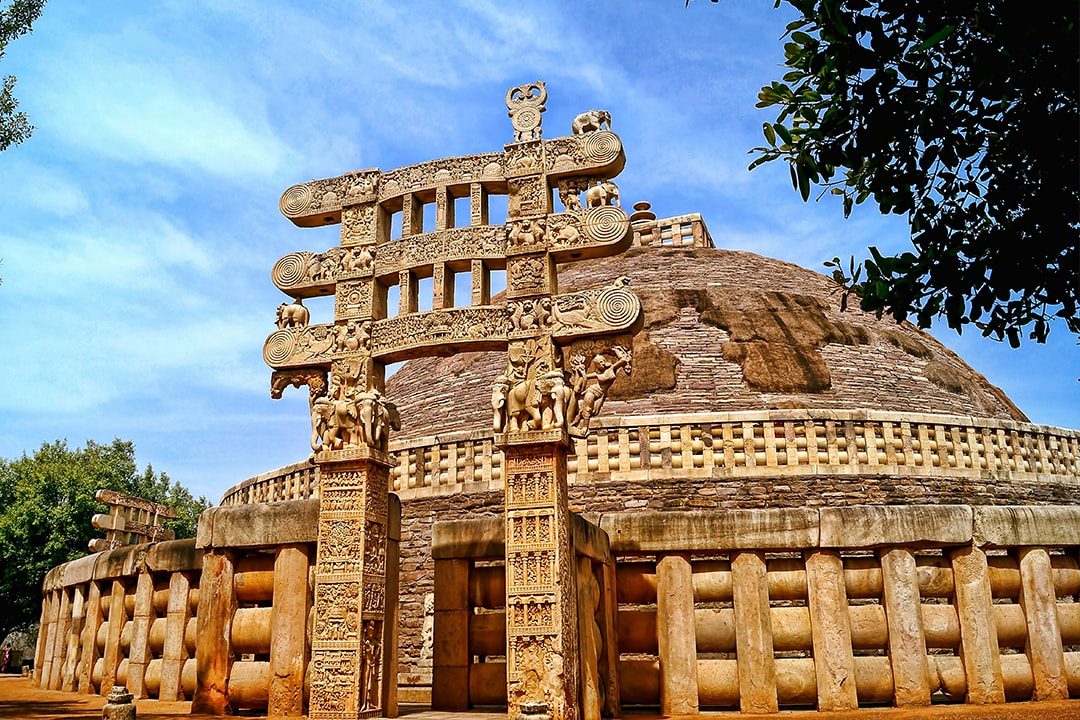
 The roots of Indian history lie in its historic forts, the ancient temples, and the alluring Mughal architecture. Unravelling these marvels will offer you a peek into the rich Indian history.
The roots of Indian history lie in its historic forts, the ancient temples, and the alluring Mughal architecture. Unravelling these marvels will offer you a peek into the rich Indian history.Top 16 Historical Places To Visit In India
- Taj Mahal, Agra
- Qutub Minar, Delhi
- Amer Fort, Rajasthan
- Ajanta and Ellora Caves, Maharashtra
- Virupaksha Temple, Karnataka
- Mahabalipuram, Tamil Nadu
- Konark Temple, Odisha
- Sanchi Stupa, Madhya Pradesh
- Khajuraho Temples, Madhya Pradesh
- Victoria Memorial, Kolkata
- Hawa Mahal, Jaipur
- Red Fort, Delhi
- Mysore Palace, Mysore
- Jallianwala Bagh, Amritsar
- Fatehpur Sikri, Agra
- Gateway of India, Mumbai
1. Taj Mahal, Agra
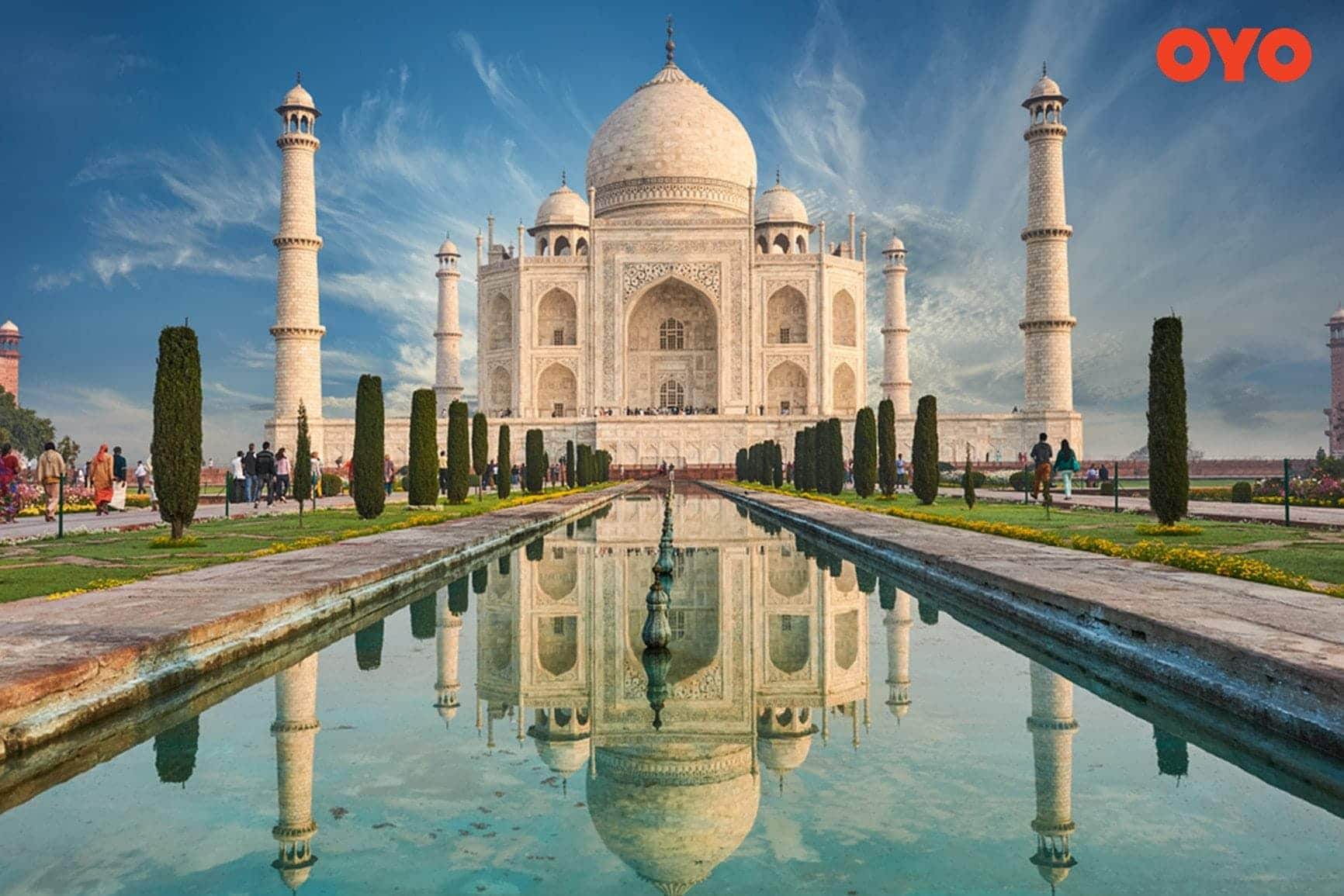
This epitome of Mughal architecture, built entirely with white marble is one of the most well-known identifiers of India. Its grandeur and beauty will have you spellbound.
Shah Jahan built this paragon for his wife Mumtaz Mahal to enunciate his love for her.
Situated in one of the “Golden Triangle” cities, you also get an opportunity to explore the streets of Agra.
Entry fee: Indian – INR 40, Foreigner- INR 1000
Timings: 6:30 am to 9:30 pm (closed on Fridays)
2. Qutub Minar, Delhi
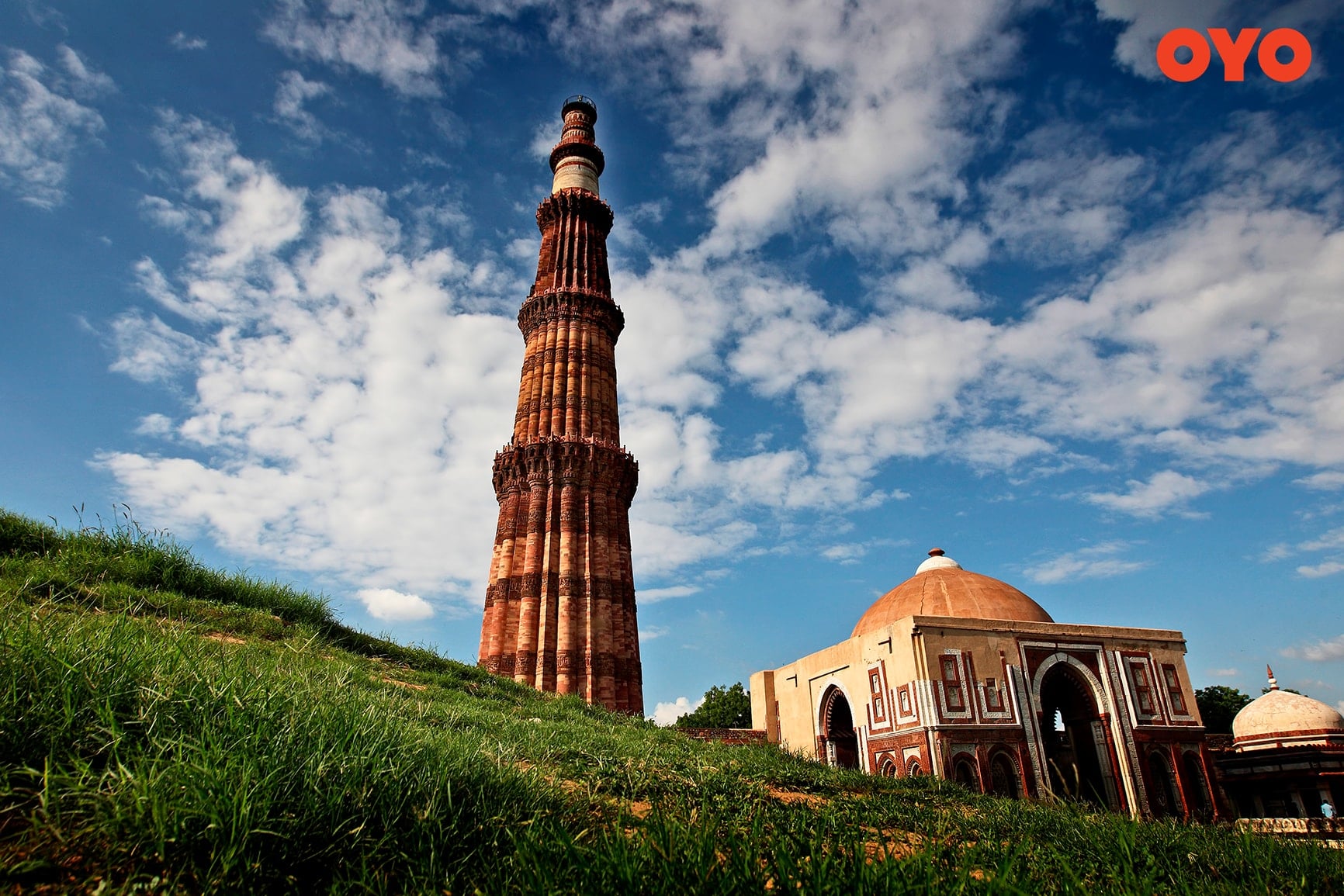
One of the tallest creations in the Indian history is the Qutub Minar. With its red sandstone and aesthetic Iranian architecture, the minaret is the most famous tourist attraction in India.
This UNESCO World Heritage site towers at a height of 240 feet making it one of the tallest ancient towers across the globe. Assimilate history of the minaret by reading the inscriptions engraved in Parso-Arabic and Nagari characters.
Built by Qutub Ud-Din-Aibak in the nineteenth century this tower is a must visit place in Delhi.
Entry fee: for Indians- INR 10 and Foreigners- INR 250
Timings: 7 am to 5 pm
3. Amer Fort, Rajasthan
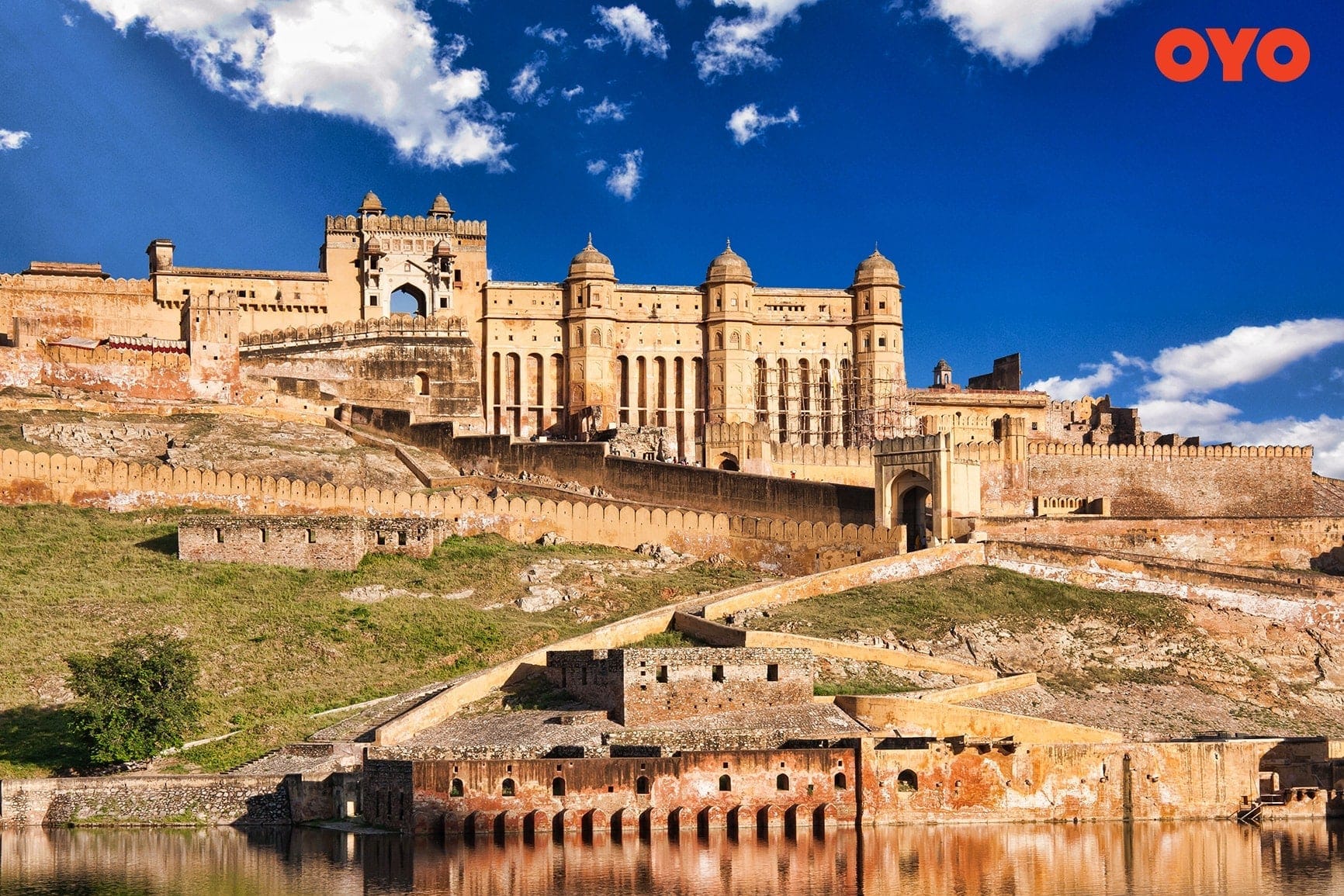
The splendid Amer Fort sits atop a hill called Cheel ka Teela, safeguarded by the Maota Lake. The essence of the Amer fort lies in its captivating architecture and the lustrous red sandstone and marble.
The gigantic fort has some mystical elements enveloped in it, like the Diwan-i-Khaas, the Diwan-i-aam, and the beguiling Sheesh Mahal. Enjoy an elephant ride towards the Suraj Pol (sun gate)
A hidden tunnel in the fort takes you on a prolonged path bridging the paerfedlace to the Jaigarh Fort.
Entry fee: Indians- INR 25 and Foreigners- INR 200
Timings: 9:30 am to 4:30 pm
4. Ajanta and Ellora Caves, Maharashtra
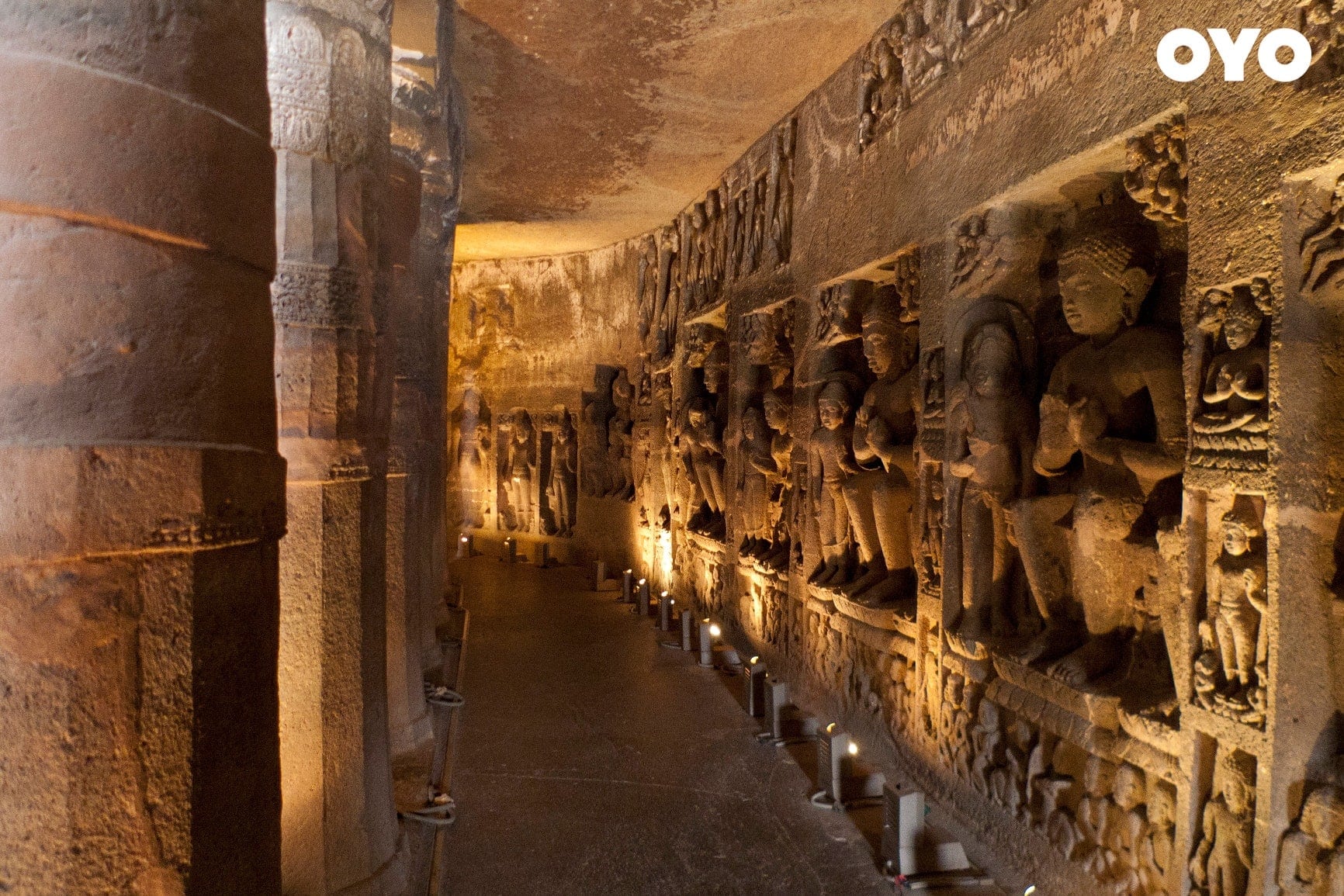
The enthralling caves of Ajanta and Ellora in Maharashtra are the epitome of beauty. With their authentic rock-cut sculptures and ancient Indian art, the caves have become a UNESCO World Heritage site.
The artifacts in the cave portray the past lives and rebirths of Buddha in spellbinding sculptures and murals. Discovered in 1819, the caves are a popular tourist hot spots and a must visit.
Entry fee: Indians- INR 30 and Foreigners- INR 500
Timings: 8 am to 5 pm
5. Virupaksha Temple, Karnataka
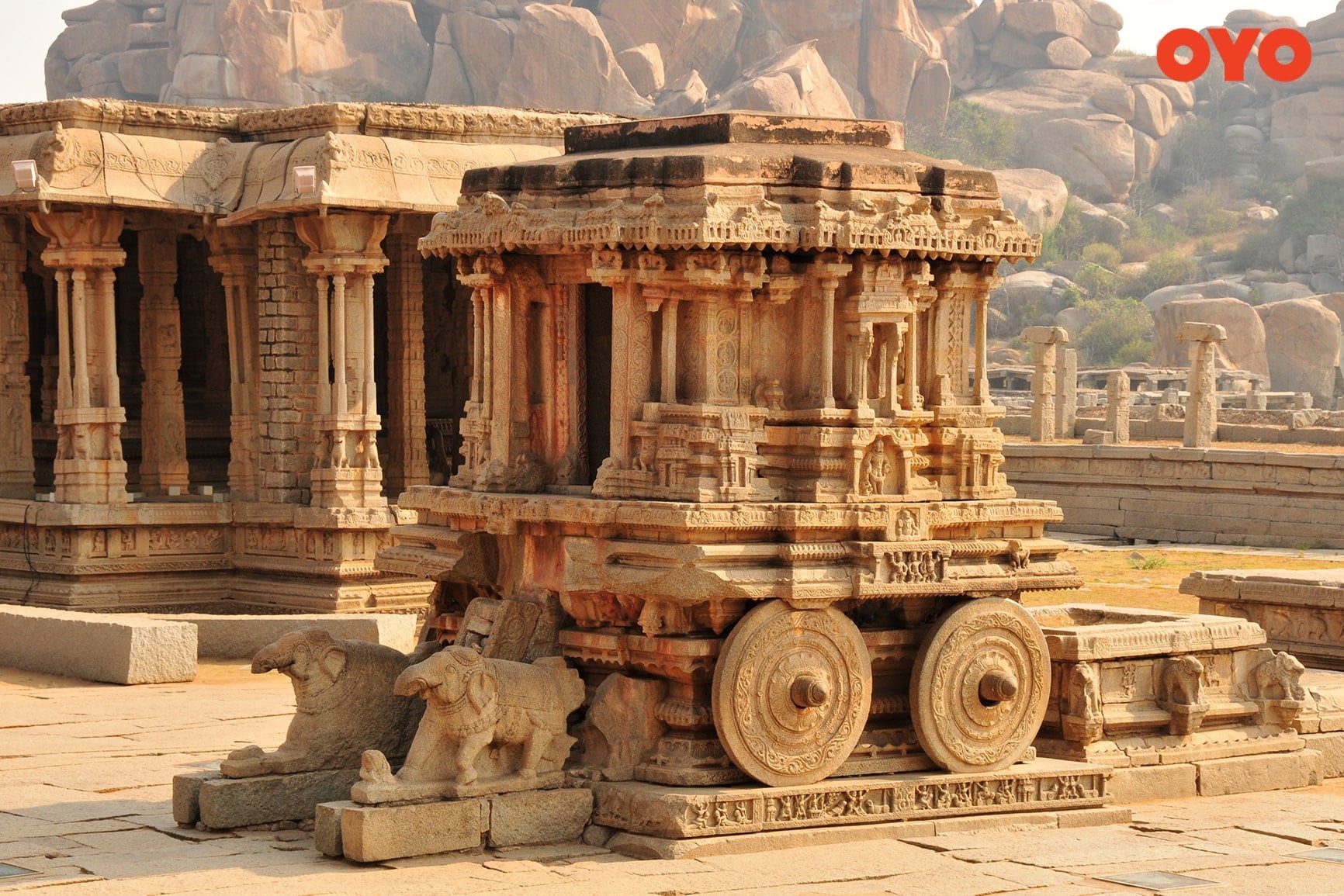
Situated in Karnataka, the exquisite city of Hampi houses some of the most breath-taking temples.
The Virupaksha Temple situated in Hampi is the most astonishing marvel ever discovered.The sculptures of Lord Shiva carved on stones is the predominant feature of this spectacular temple. Built under the ruler Deva Raya II of the great Vijayanagara Empire is a UNESCO World Heritage site in Hampi.
Enjoy the annual festivals of Virupaksha, Pampa, and chariot in Hampi to get a deeper look into the ever so opulent temple of Virupaksha.
Entry fee: for Indians- INR 10 and Foreigners- INR 250
Timings: 6 am to 6 pm
6. Mahabalipuram, Tamil Nadu
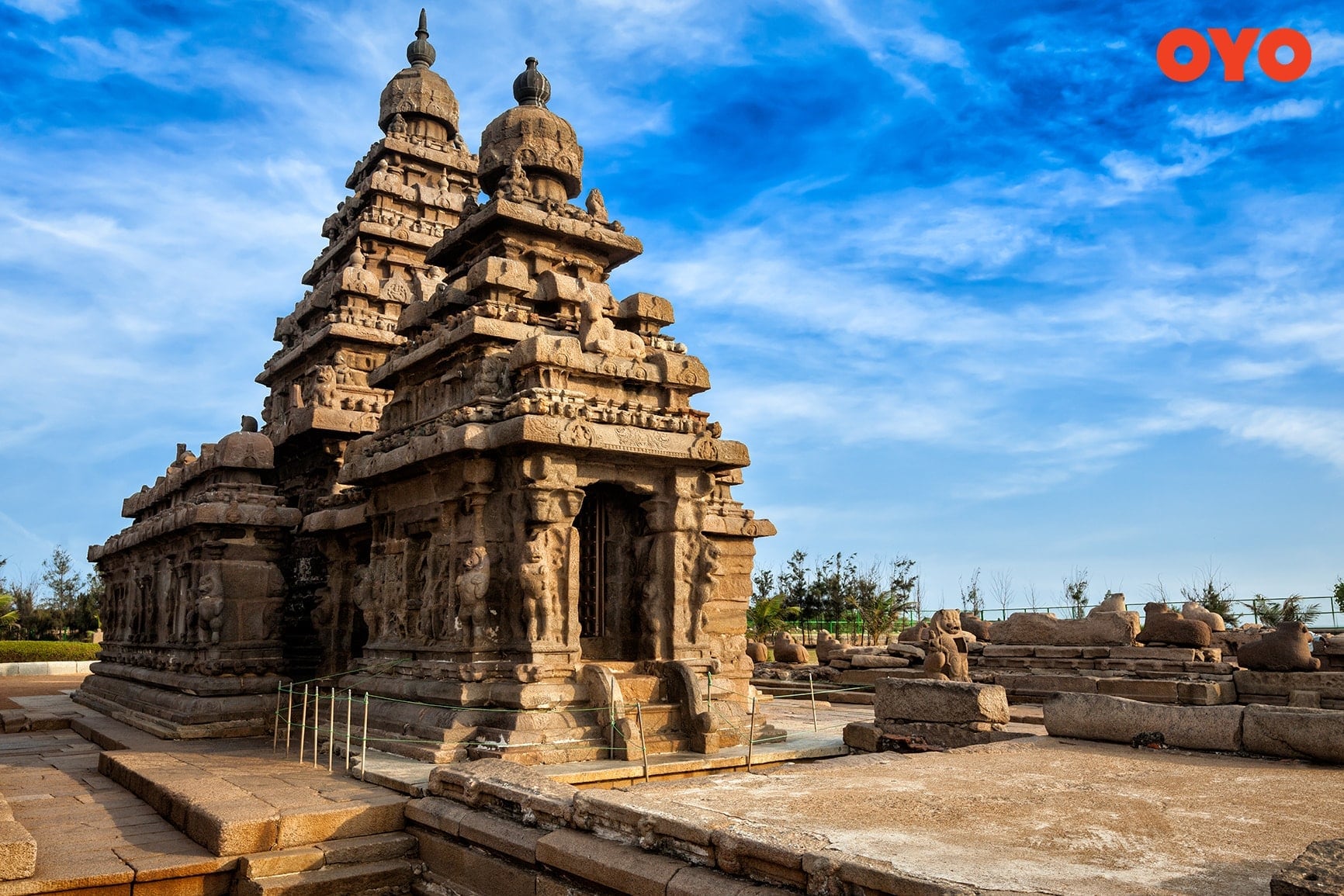
The antique carved rocks blended with the chariots and cave sanctuaries make Mahabalipuram, one of the key historic sites of Tamil Nadu.
Built in the 7th century by the dynasty of Pallavas, the Shore Temple is one of the most popular monuments of Mahabalipuram. Dedicated to Lord Shiva, the temple exhibits a strong Dravidian influence in its architecture infused with some Buddhist elements.
Admire the great sculptures in Mahabalipuram on your visit.
Entry fee: for Indians- INR 10 and Foreigners- INR 250
Timings: 6 am to 6 pm
7. Konark Temple, Odisha
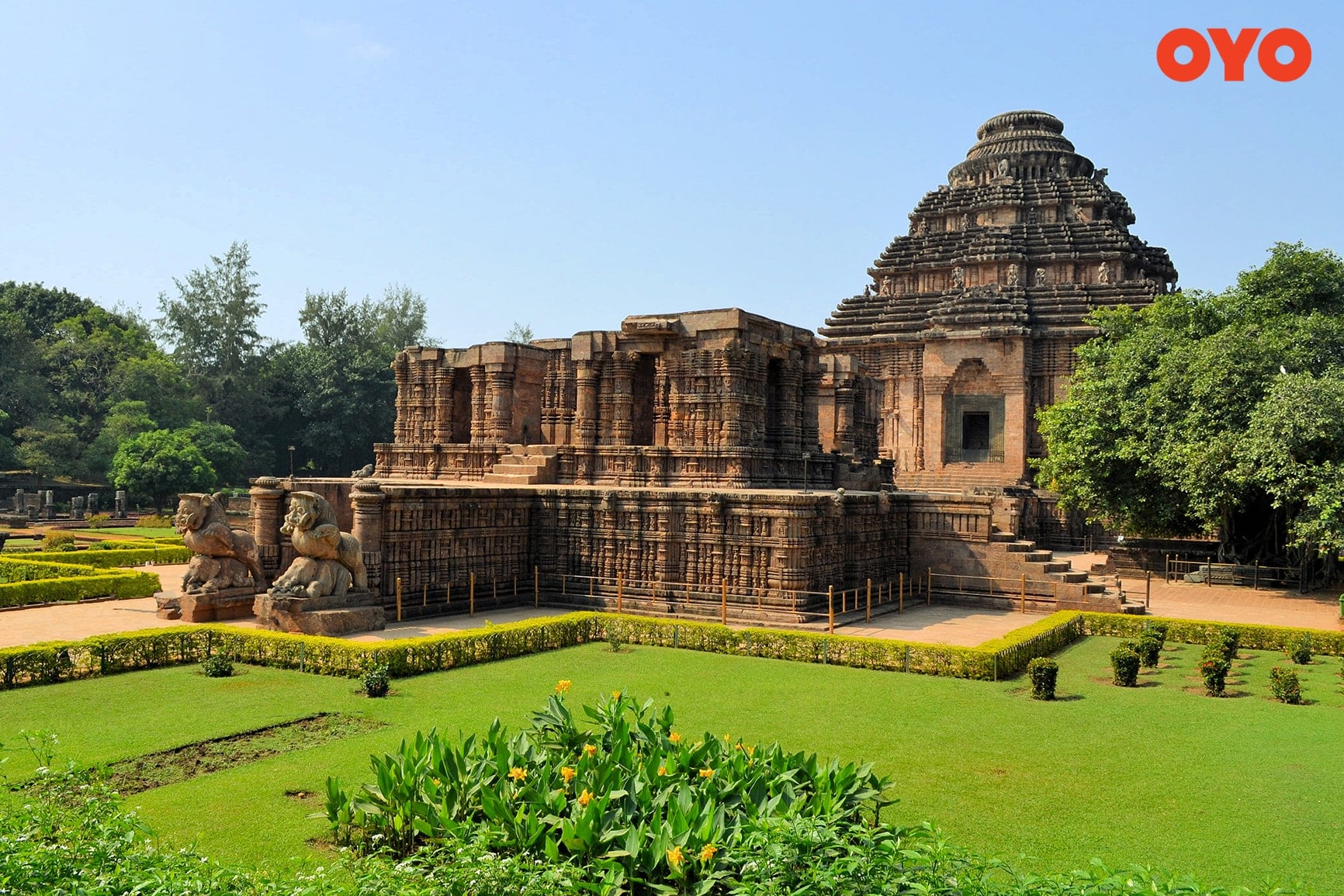
Devoted to the Sun God ‘Surya’, the prepossessing Konark Temple is the most spellbinding historic site in Odisha. The Kalinga architecture reflecting in its gigantic chariot, pillars and walls give the temple an Odiya touch.
Also classified as ‘Black Pagoda’ by some European sailors, this UNESCO World Heritage site has also featured in the list of 7 Wonders of India. The magnificent Khandolite rocks make the beauty of this temple even more alluring to the human eyes.
Entry fee: for Indians- INR 30 and Foreigners- INR 250
Timings: 6 am to 8 pm
8. Sanchi Stupa, Madhya Pradesh
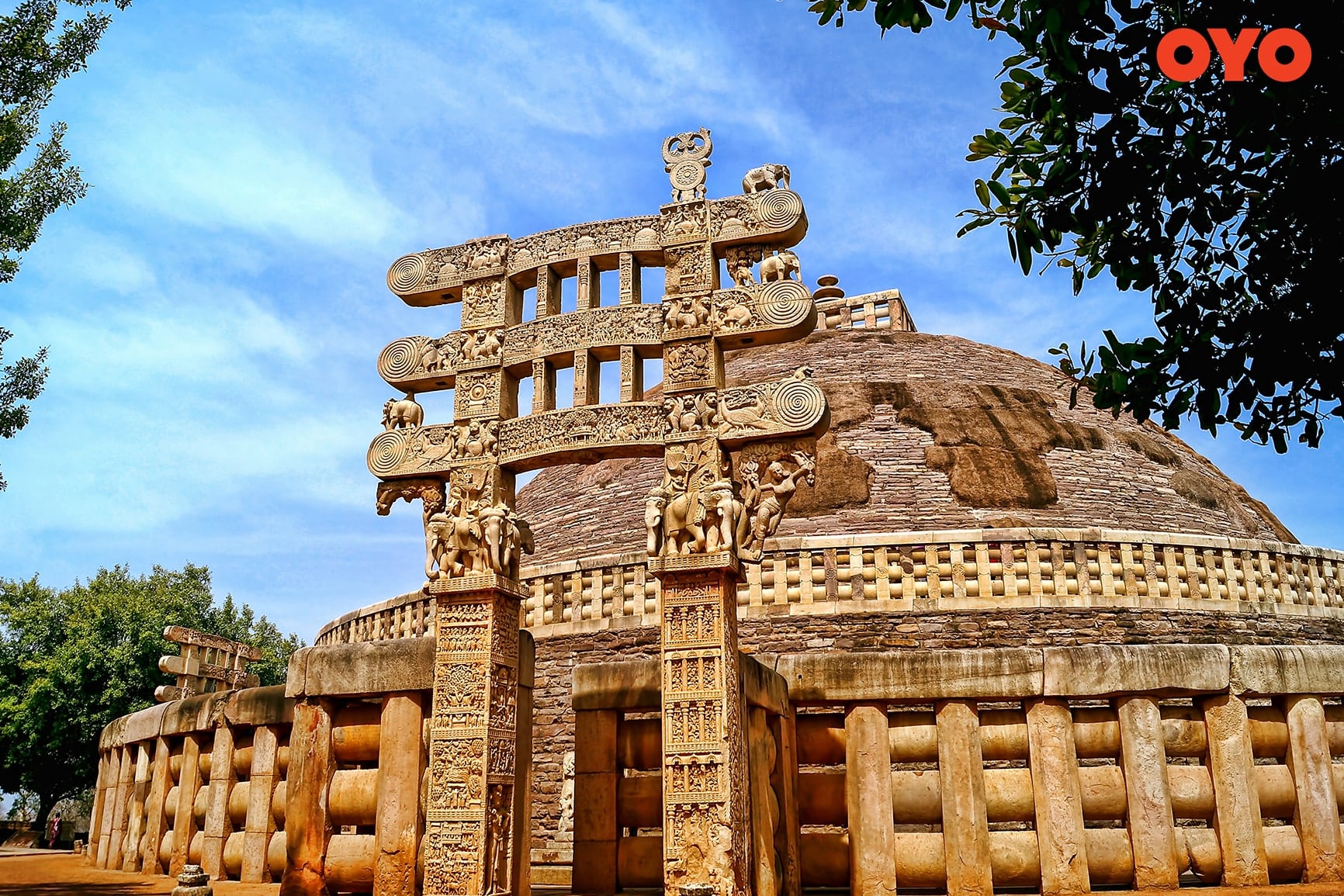
The Sanchi stupa stands as an unparalleled example of the majestic aura that is encompassed within the Buddhist style of architecture. Ancient relics of Lord Buddha are rooted within the dome- shaped structure of the stupa, which was how the structure looked until the dawn of the 1st century.
The stupa borrows its esteem from its commissioner, Ashoka of the Maurya dynasty, whose stature can be well indicated in the terms of the stupa’s altitude. The 54 ft. high stupa tells the tales of Lord Buddha’s life through its mesmerizing carvings, whose intricacy personifies the architecture.
Marked as a UNESCO world heritage site the stupa is visited regularly by uncountable visitors. So what are you waiting for!
Entry fee: for Indians- INR 20 and Foreigners- INR 250
Timings: Sunrise to Sunset
9. Khajuraho Temples, Madhya Pradesh
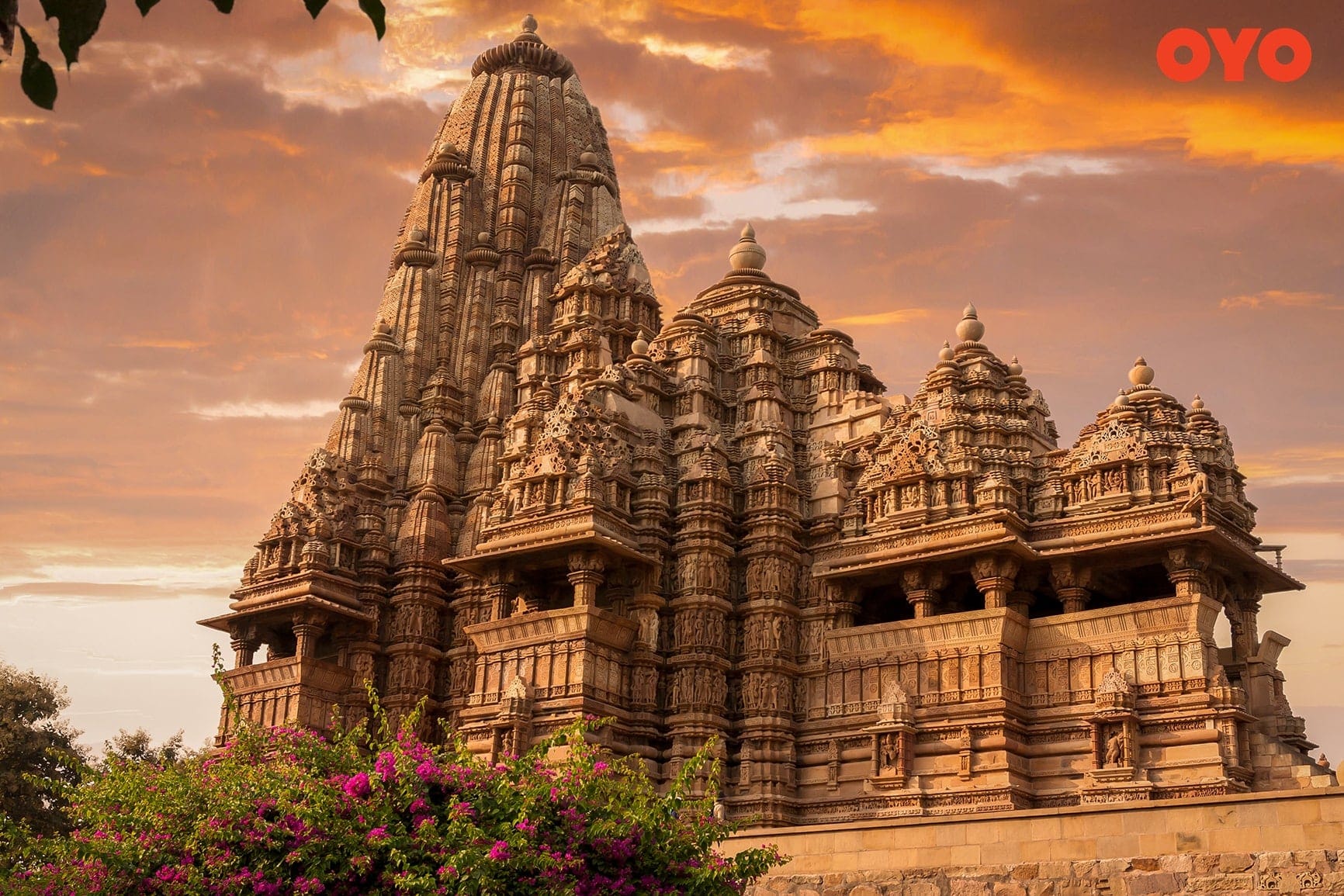
Located in the small town of Khajuraho, the Khajuraho Temples have found a place within UNESCO’s list of World Heritage Sites and are visited annually by many visitors.
This group of Hindu and Jain temples built by the Chandelas reflects the acceptance and respect for diverse religions during those times. All temples, barring one, are east-facing and glimmer at the break of dawn by the sunrise.
The temples are famous for intricately carved statues and sculptures, some of which are remnants of the ancient culture of Kama Sutra.
Visit these temples to delve deeper into the traditional Hindu values of Dharma, Kama, Artha, and Moksha, that these temples are symbolic of.
Entry fee: for Indians- INR 30 and Foreigners- INR 500
Timings: 6 am to 10 pm
10. Victoria Memorial, Kolkata
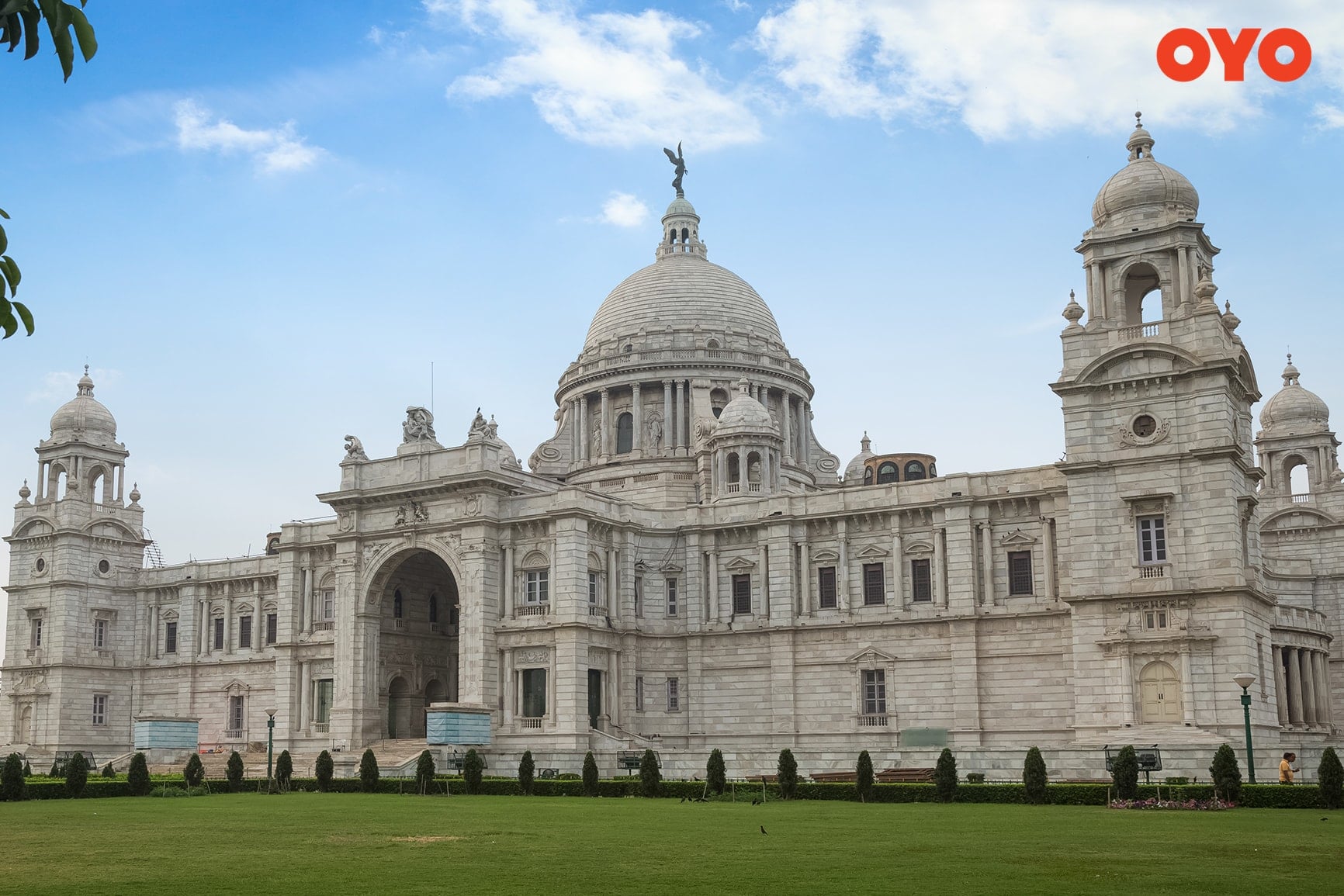
Located right in the heart of Kolkata, this memorial has been named after Queen Victoria. The elegant white marble structure is girdled by lush green gardens which together cover 64 acres of land.
Small sculptures and statues, which are spread throughout the gardens, add further charm to the memorial premises.
The memorial is illuminated by lights in the evening and runs high in terms of seraphic beauty.
Don’t miss out on the evening show called ‘Son et Lumiere’ on your visit.
Entry fee: for Indians- INR 20 and Foreigners- INR 200
Timings: 10 am to 5 pm (closed on Mondays)
11. Hawa Mahal, Jaipur
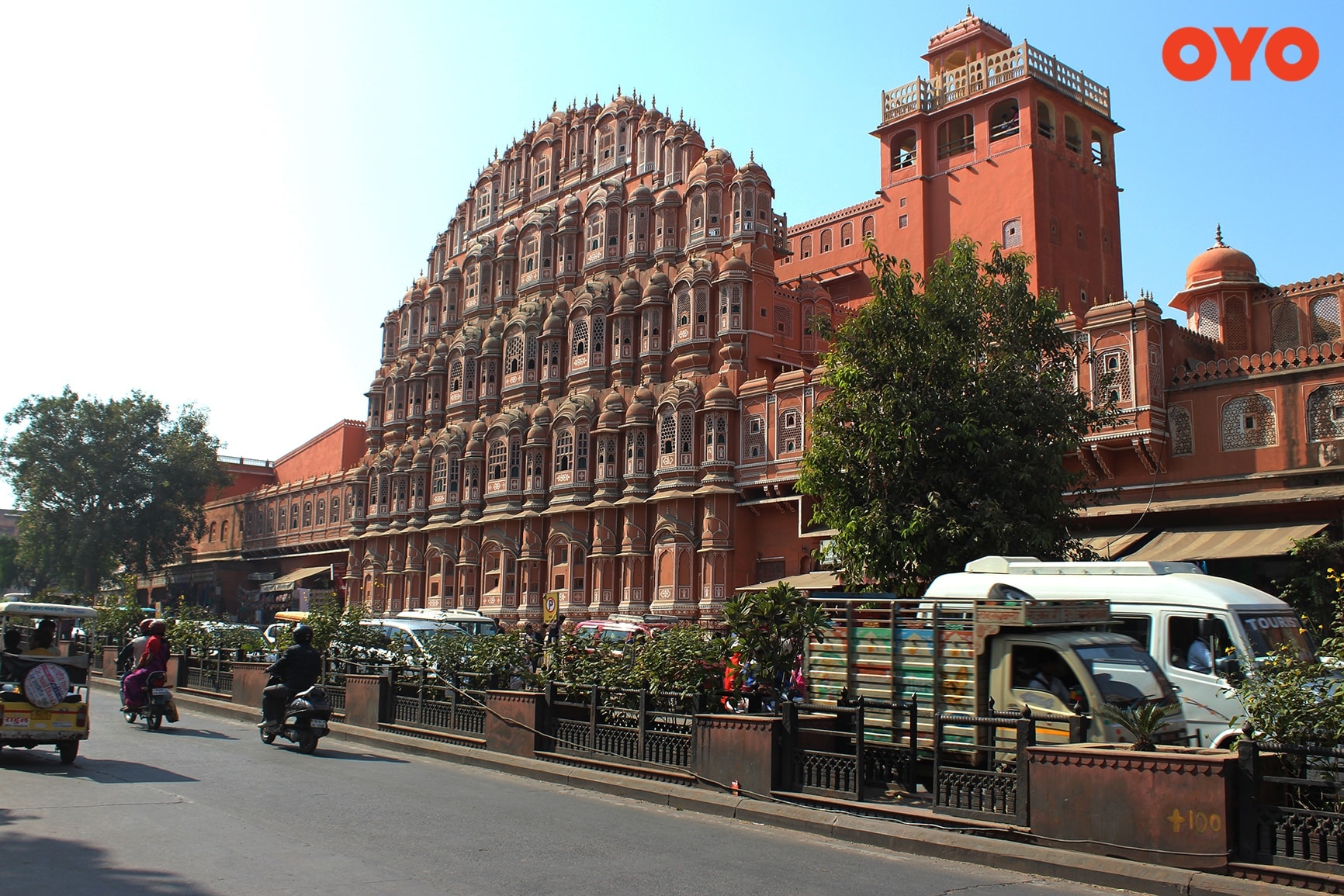
The Palace of Wind, Hawa Mahal
Designed by Lal Chand Ustad, Hawa Mahal is built in red and pink sandstone. Interestingly, Hawa Mahal is more of a gallery and was created so that the royal ladies could look outside as they were constantly under ‘purdah’.
Located in the heart of Jaipur, Hawa Mahal can be reached via bus, auto-rickshaw, taxi or cars from the capital city. The months of September to February are the best time to visit Hawa Mahal.
Entry fee: for Indians- INR 10 and Foreigners- INR 50
12. Red Fort, Delhi
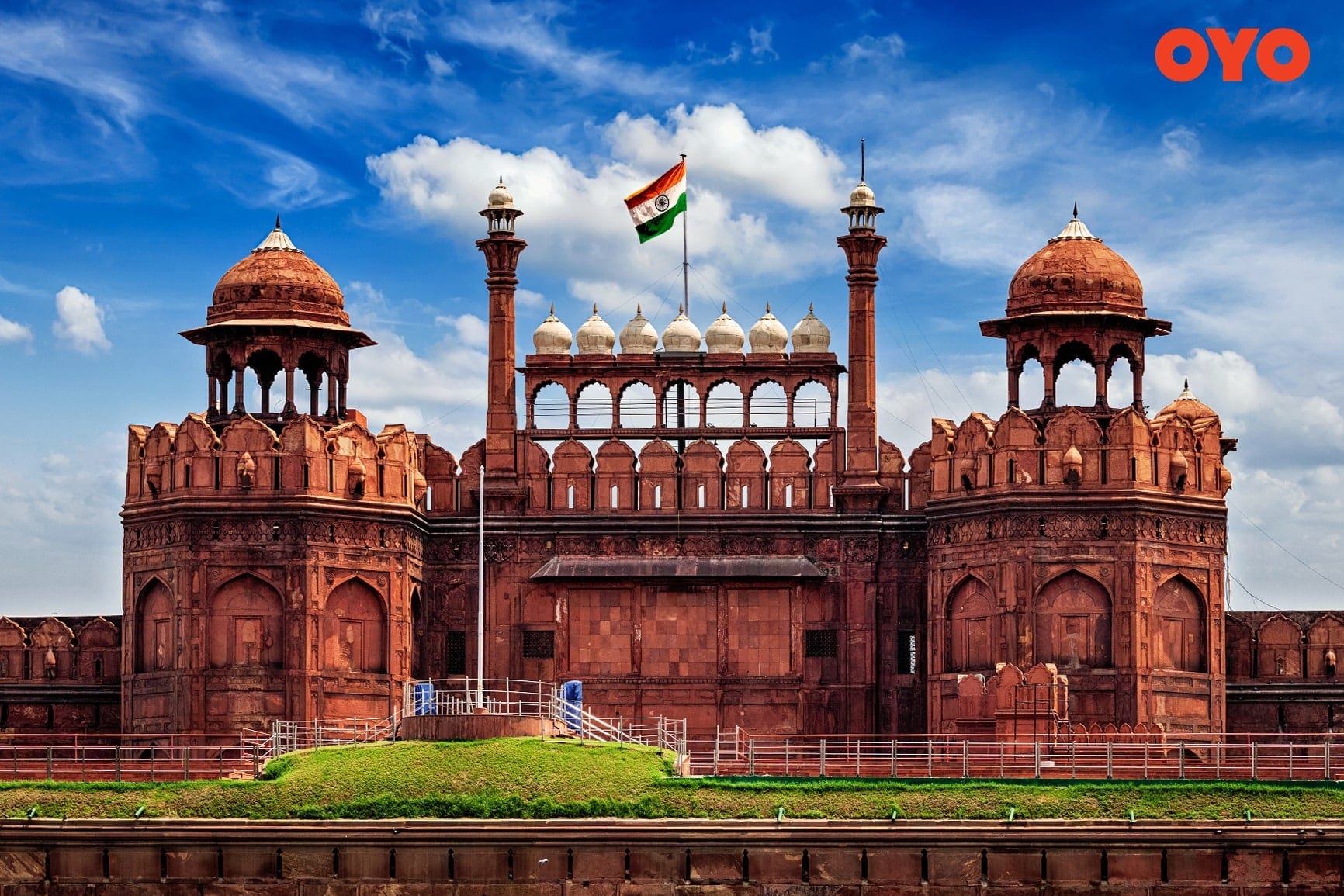
Built at the zenith of Mughal Empire by Shah Jahan, Lal Quila was completed in a period of nine years. The fort today stands as a testimony to the magnificent glory and power of Mughal Sultanate, adorned in walls of red sandstone. One of the most politically significant monument, the Red Fort witnesses the independence day celebrations every year.
A fine blend of Persian and indigenous architectural styles, the Red Fort hosts important key rooms such, Diwan-i-aam, Diwan-i-Khas, Mumtaz Mahal, Rang Mahal among many others. Spending a pleasant autumn day around the lawns of this area would be the perfect way to walk through the history of Mughal India.
Timings: 9:30 am- 4:30 pm daily (Closed on Mondays)
Entry fee: Indians- INR 10 and Foreigners- INR 250
13. Mysore Palace, Mysore
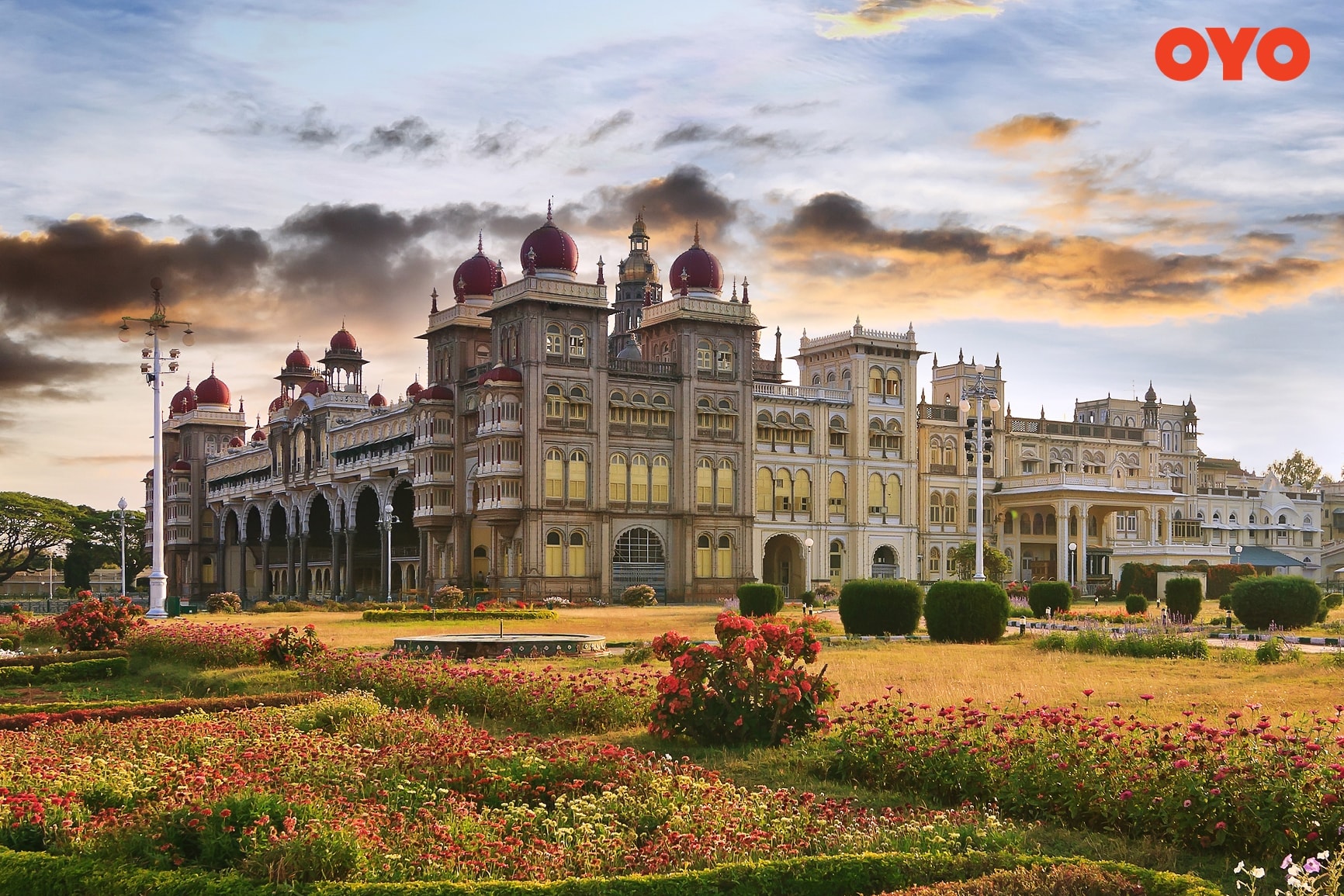
Built by British architect Lord Henry Irwin in 1912, Mysore Palace is located in the heart of the city. An architectural wonder built in Indo Saracenic style, this palace features intricate interiors. Interestingly, Golden palanquin was used by the Maharaja which was then carried by elephants during the annual Dasara festivities. Goddess Durga’s idol is now placed inside the palanquin.
The months between October to March are the most pleasant and offer a comfortable stay here. Avoid summers as they are very sultry hot.
Entry fee: Indians- INR 40 and Foreigners- INR 200
Timings: 10 am – 5.30 pm (Closed on Sundays and govt holidays)
14. Jallianwala Bagh, Amritsar
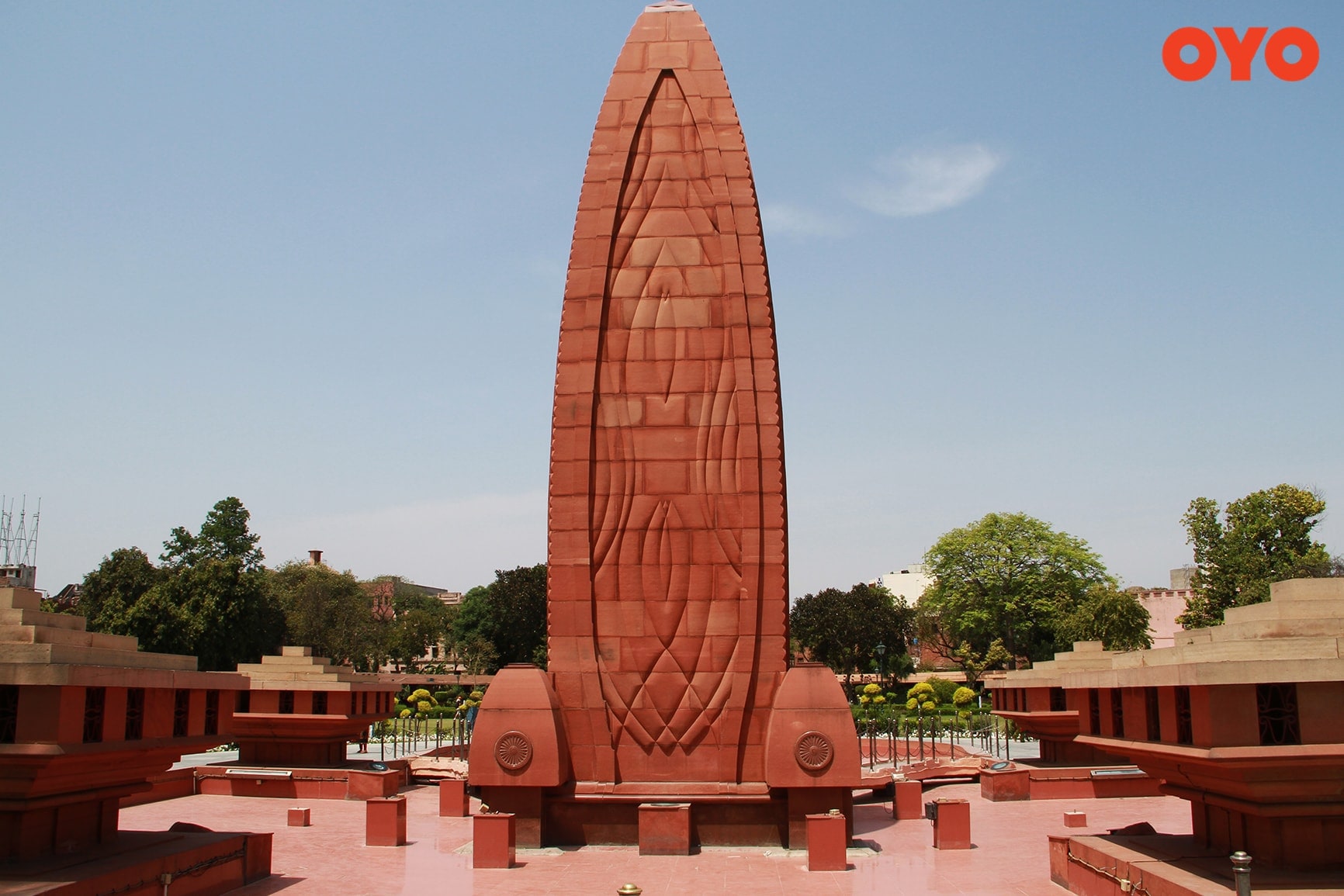
Located in the heart of Amritsar, a small walk from the Golden Temple leads to the public garden of Jallianwala Bagh. Originally used for community meetings and religious discourses, the area became a bloodbath for peaceful protestors on the Vaisakhi day of April 1919.
The best time to visit Amritsar is between November and March when the weather is comparatively pleasant and ideal for sightseeing and visiting the Jallianwala Bagh.
Visitors can attend the light and sound show to experience the tragedy as it unfolded on April 13, 1919, when the then British Officer, General Dyer ordered his troops to fire machine guns on an unarmed peaceful crowd.
Entry fee: No charges
Timings: Open all days 06:30 am to 07:30 pm
15. Fatehpur Sikri, Agra
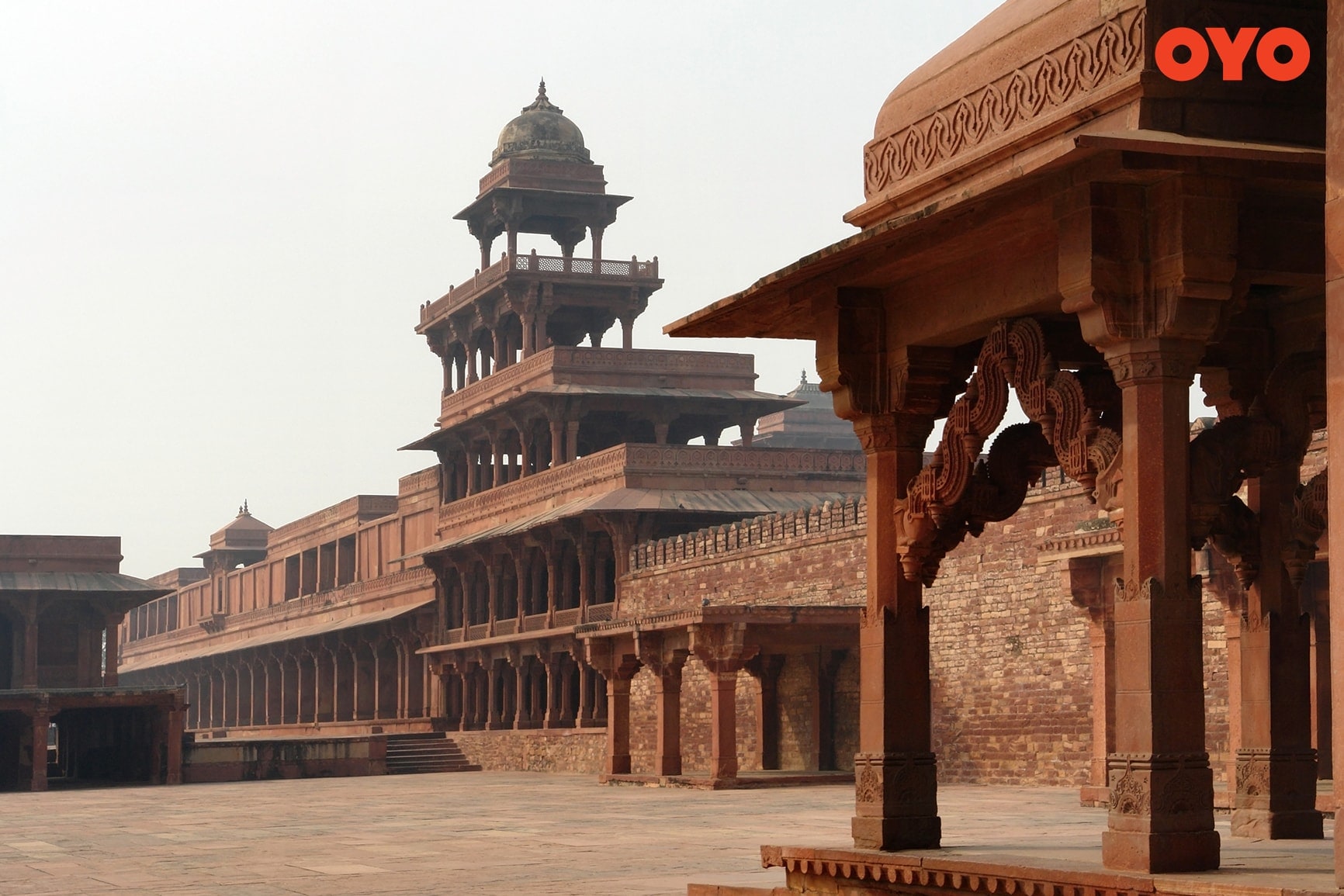
Located at a distance of 40 km to the west of Agra, the erstwhile capital of Jalaluddin Akbar, Fatehpur Sikri stands as a vivid memory of the Mughal era. The highest gateway in the world, Buland Darwaza marks one of the finest surviving glories of the Mughal Sultanate as the entrance to the magnificent palace.
The fortified ancient city was also home to the famous Sufi saint, Salim Chisti, who prophesied the birth of a male heir to the kingdom. Take a walk around the royal court of Diwan-i-Khas, marveling at the grand finesse of intricately carved walls.
Entry fee: Indians- INR 40 and Foreigners- INR 510
Timings: Sunrise to sunset (Closed on Fridays)
16. Gateway of India, Mumbai
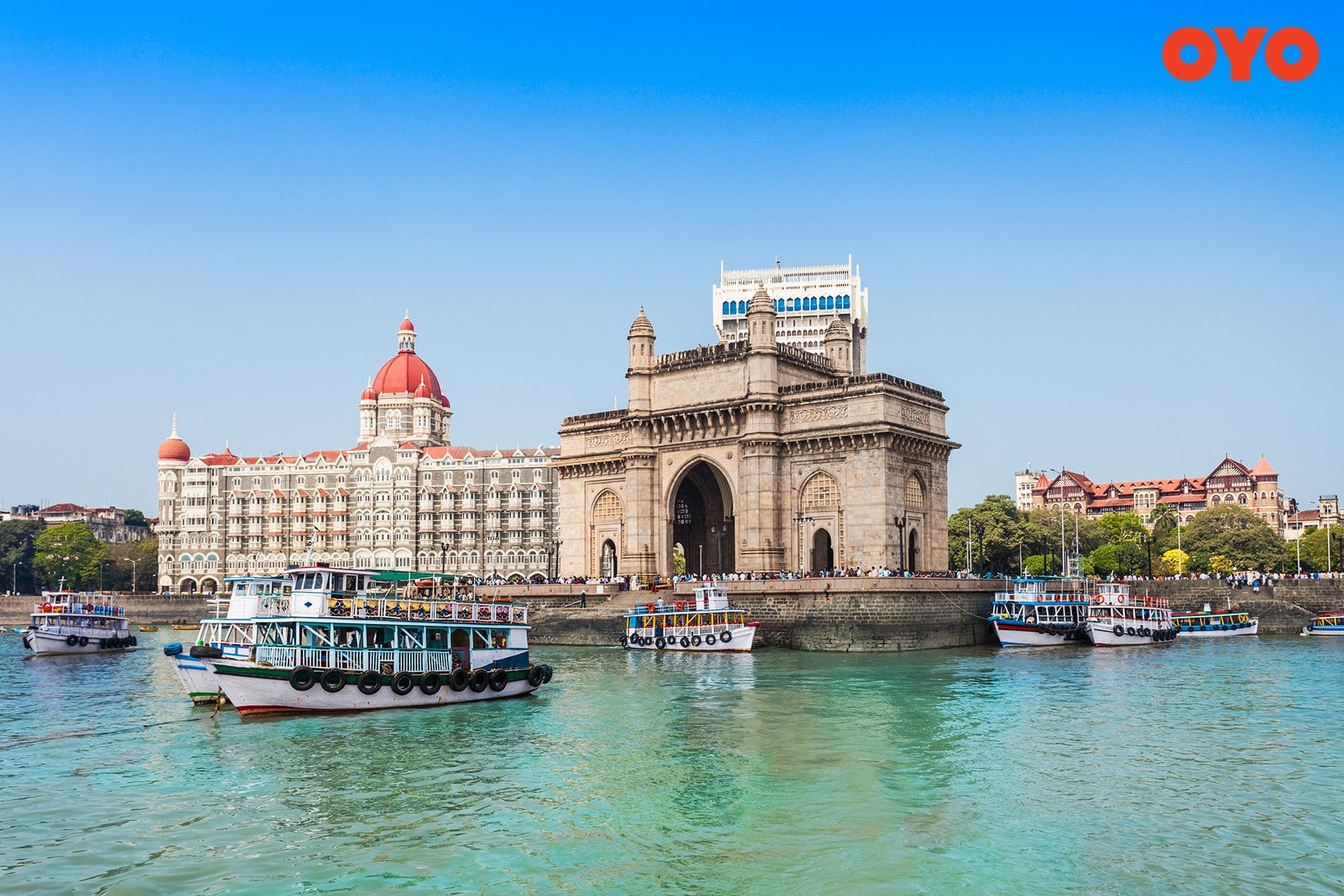
One of India’s iconic landmarks, Gateway of India overlooking the Mumbai Harbour was built by the British in 1924.
In the modern times, the Gateway is a favorite picnic spot for locals and tourists, alike.
Dotted by dozens of street vendors serving lip-smacking local food along with balloon sellers, give this place a pleasingly happy vibe.
Timings: Visit anytime
Entry fee: No charges



Comments
Post a Comment